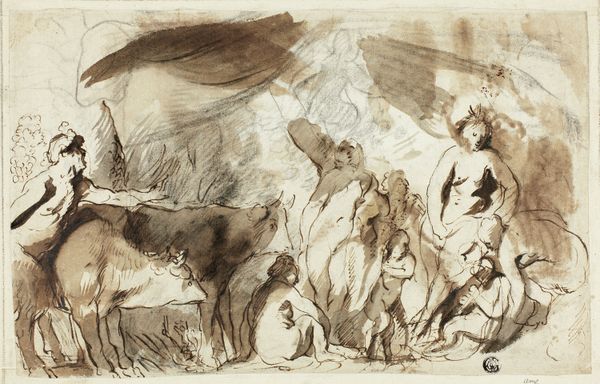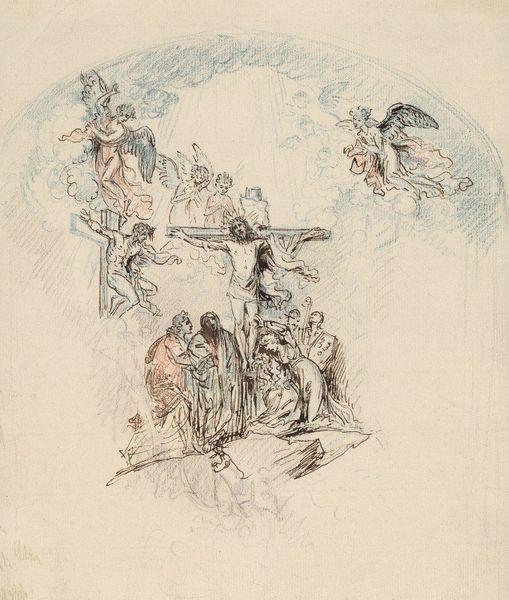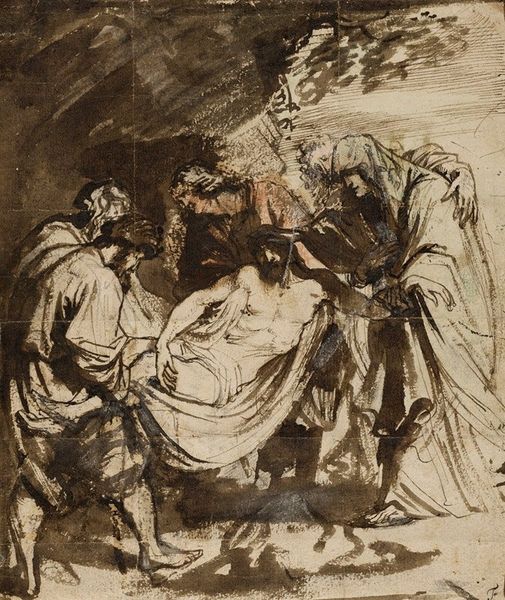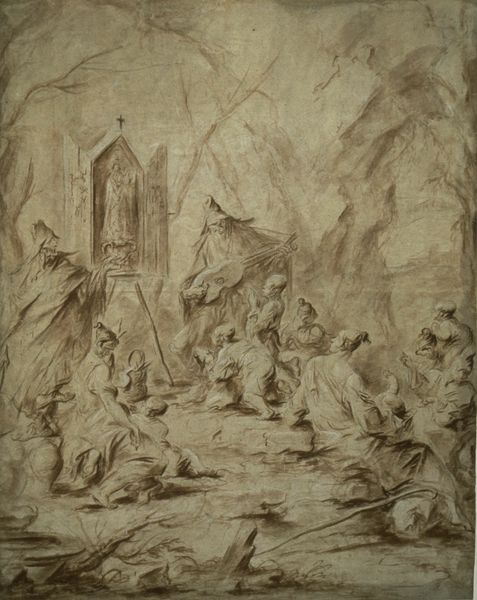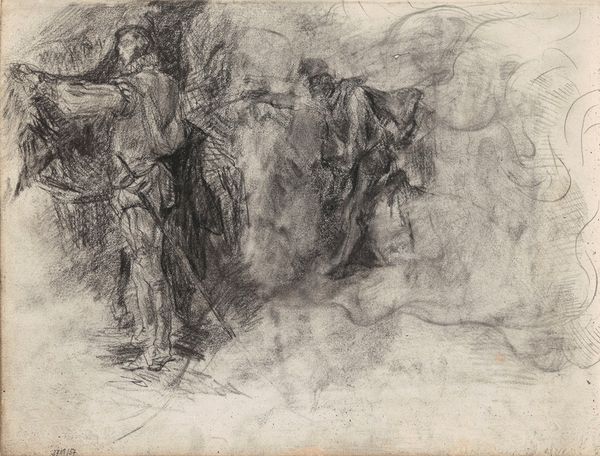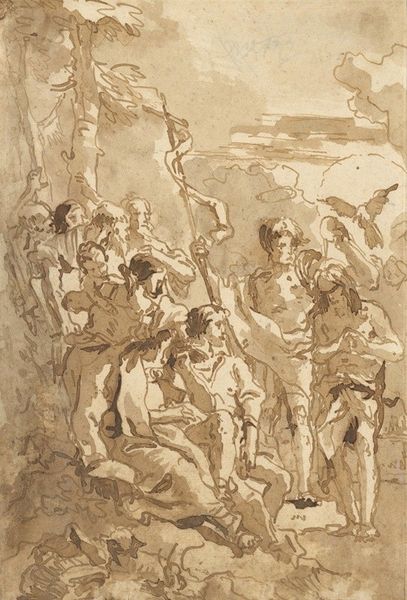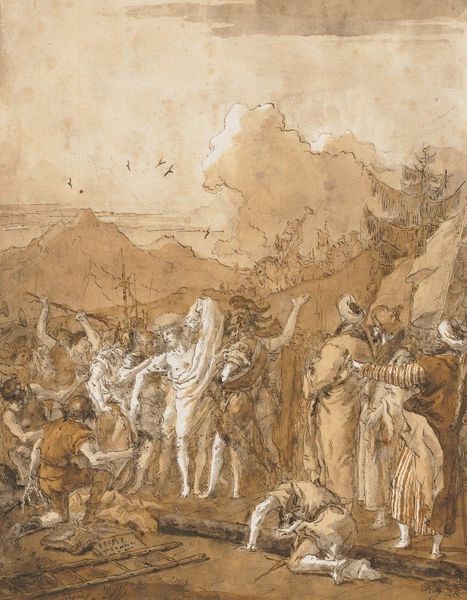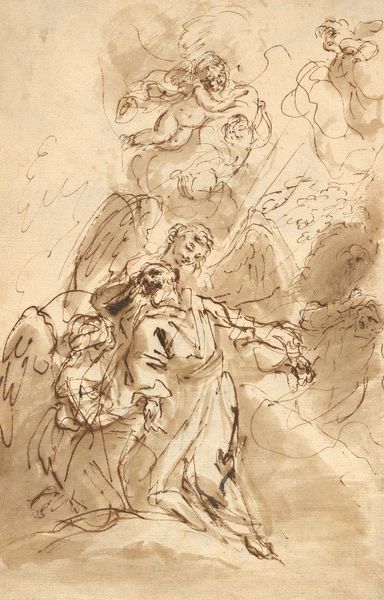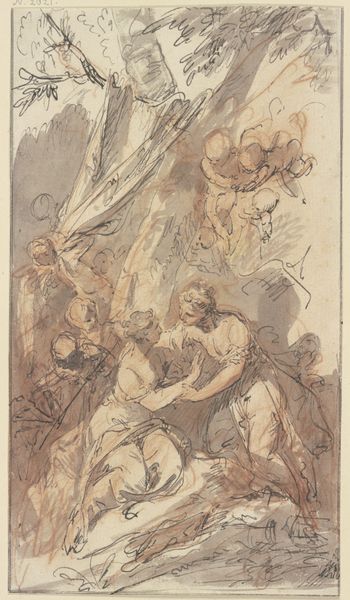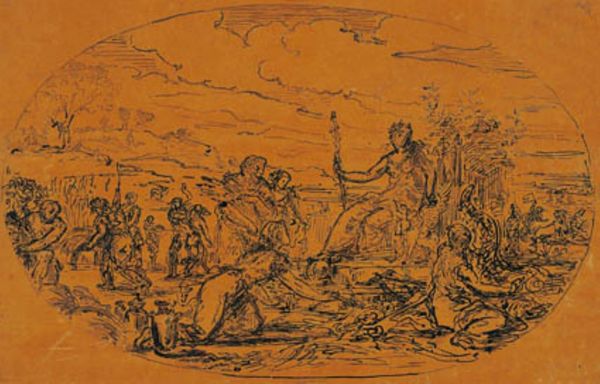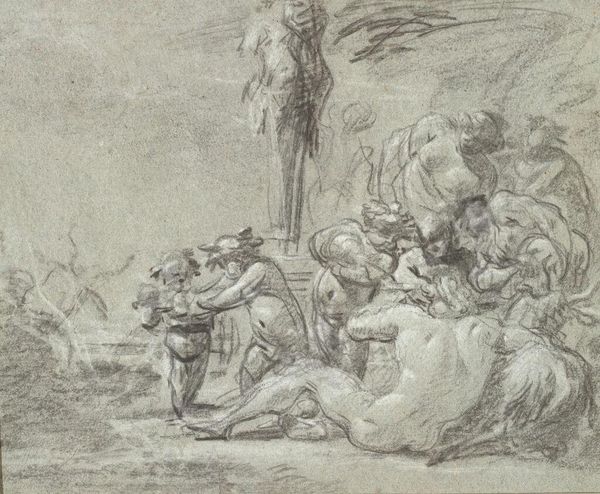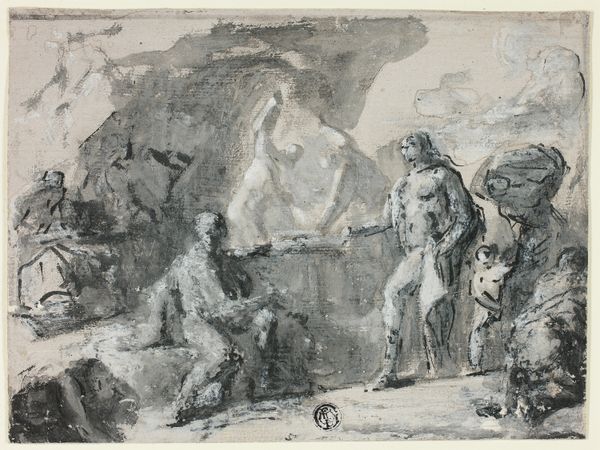
Dimensions: 263 mm (height) x 427 mm (width) (bladmaal)
Editor: So, here we have Gustave Doré’s charcoal drawing, "The Three Witches from Shakespeare’s Macbeth," made sometime between 1832 and 1883. It feels like such a preliminary sketch, raw and unsettling. What do you see in this piece? Curator: Immediately, I see Doré engaging with a critical moment in Western cultural history. Shakespeare's Macbeth is not merely a play, but a foundational text reflecting anxieties around power, gender, and the "other." The witches, marginalized figures, wield considerable influence. What societal fears about female agency and the occult were at play when both Shakespeare and Doré depicted these scenes? Editor: Female agency as a source of fear... Interesting. So you're saying Doré's visualization of the witches contributes to an ongoing conversation about women in positions of power? Curator: Precisely! Think about how women, particularly those who deviated from societal norms, were historically branded as witches, heretics, or madwomen. This image taps into that history, doesn’t it? Note the bleak landscape, the swirling lines—does it evoke the societal anxieties linked to unregulated female influence, or perhaps critique the demonization of the 'other'? How does Doré use light and shadow to convey this ambiguity? Editor: The heavy shadows definitely create an atmosphere of suspicion. I guess I hadn't really considered the historical context of the witch hunts, but framing these characters as symbols of suppressed power gives the drawing a whole new dimension. Curator: It also prompts us to consider: Who benefits from portraying these women as monstrous figures? Art often reinforces prevailing power structures or challenges them. The Romantic style itself emphasized emotional intensity, prompting viewers to engage with uncomfortable themes like social injustice and the demonization of marginalized groups. Editor: Wow, I'm definitely going to look at Doré's work differently now. It’s less a simple illustration, and more a complex statement about gender and power. Thanks! Curator: It’s through such critical dialogues that art history truly comes alive! Looking at artworks through a lens of social consciousness, even those from centuries ago, makes us more aware of persistent inequalities.
Comments
No comments
Be the first to comment and join the conversation on the ultimate creative platform.
